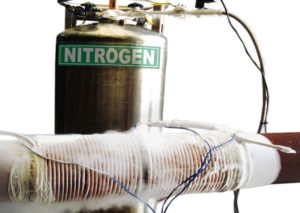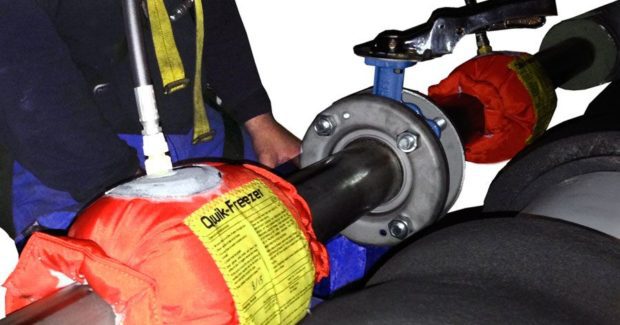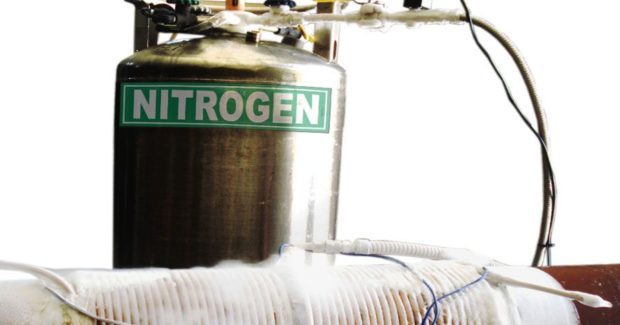Reduce Maintenance Costs with Advanced Pipe Freezing Technology
Techniques involving the use of liquid carbon dioxide or nitrogen have now extended the potential to pipes up to 35” diameter and beyond.
Posted: May 23, 2022

Transmission of fluids in pipework play a crucial role throughout the manufacturing industry, meaning any interruptions can be expensive. They can lead to lost production if sections of pipe need to be restored or if control gear such as valves and monitoring equipment have to be replaced. Often these requirements involve closing the entire pipe system and draining off and safely disposing of fluids.
The concept of freezing the fluid either side of a section of pipe for repairs or replacement of control gear is in widespread use in domestic and commercial plumbing but this is limited to 50 mm (2”) diameter tubes.
More recently techniques involving the use of liquid carbon dioxide or nitrogen have now extended the potential to pipes up to 900 mm (35”) diameter and beyond.
Carbon Dioxide Freezing
Pipes between up to 200mm (8”) diameter are commonly used for transport of liquids in virtually every processing industry. Petrochemical manufacturing plants in particular employs highly complex pipework, valves, pumps and monitoring equipment to control product manufacture. Lubrication and fuel systems on aircraft, marine vessels and power generating plants are also extensive users of this range of pipework diameters. This is also essential during liquid beverage and dairy product processing.
A liquid CO2 technique now commonly used across the world is the Qwik-Freezer™ System. A specially designed insulating jacket is wrapped around the pipe at the point where the freeze is required. When liquid CO2 is injected into the space between jacket and pipe at a temperature of -78ºC (-108ºF) the pipe contents freeze and a secure “ice plug” is formed which seals the pipe.
The plug forms only in a section of pipe covered by the jacket so the resulting rise in pressure is very small and there is no damage to the pipe.
Liquid Nitrogen (LN2) Freezing
Liquids in pipes up to 900mm (35”) diameter can be frozen using liquid nitrogen. Of the various products available the Accu-Freeze™ System is an example of a world leading system.
Copper tubing can be coiled around the pipe upstream and downstream of the location requiring attention and liquid nitrogen is passed through it. Alternatively, lightweight metal jackets known as ‘Cryo Shells’ can be fitted around the area to be frozen.
Advanced temperature-monitoring units are available to control the surface wall temperature of the pipe to accurately and safely create an ice plug.
The Accu-Freeze™ System is automatic and can be remotely operated. This makes it attractive for use in locations where engineer access is restricted.
Conclusions
Pipe freezing technology allows fluids to be frozen below using liquid carbon dioxide or nitrogen. Specially designed insulation and feeder hoses are used to deliver coolants. Continuous temperature control during the freeze operation can be incorporated. The use of freeze technology affords the opportunity to isolate sections of pipework for maintenance, repair and replacement of valves and instrumentation.
Subscribe to learn the latest in manufacturing.
















